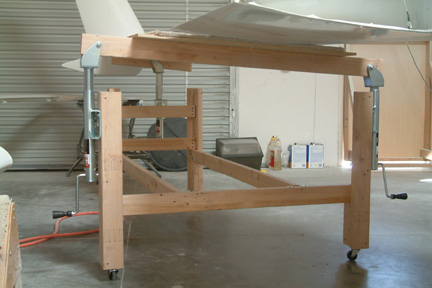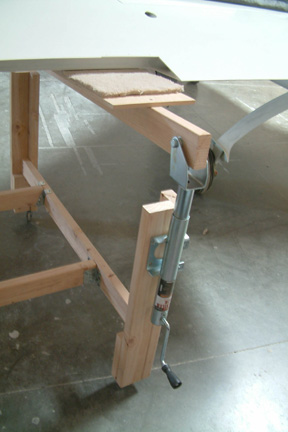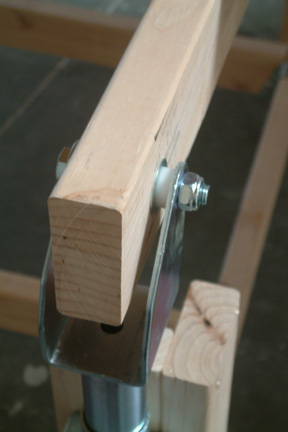Wing Angle Level Board
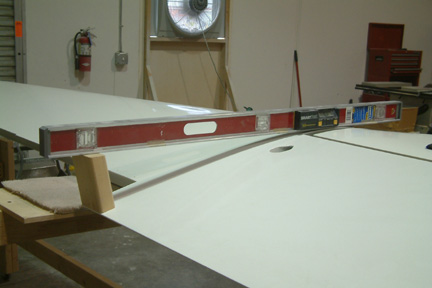 To most builders, once the wing angle level
board is removed, it will be difficult to measure the wing angle again. I left
the wing angle level board bondoed in place for as long as I could until I reached
Chapter 25, Sanding and Priming section. In order to retain that function, I
came up with a simple widget to replace the bondoed wing angle level board.
To most builders, once the wing angle level
board is removed, it will be difficult to measure the wing angle again. I left
the wing angle level board bondoed in place for as long as I could until I reached
Chapter 25, Sanding and Priming section. In order to retain that function, I
came up with a simple widget to replace the bondoed wing angle level board.
Before I removed the wing angle level boards, with the wings attached to the spar, I leveled the fuselage fore and aft and side to side. I placed my digital level on the wing level board and noted its reading. In my case, my left wing is 0.0 degrees and the right wing is at 0.2 degrees up. Then I rested my long digital level on top of the wing (close to the outboard end of the spar) and raised the back end of the digital level slowly, until I got the same reading as the wing level board. I took 2 measurements:
1) the distance between the bottom of the digital level and the TE of the wing (Height H); and
2) the distance between the TE of the wing and the resting spot of the digital level.
Based on those measurements, I can calculate the angle (A) between the digital level and the surface of the wing. I cut a 2 x 4 wood block with the height (H) and slanted top of the block. The slanted top allows the digital level to rest flush on the top of the block. Since the entire contraption is just a simple wood block, I can replicate the angle of the wing as needed in the future, without relying on the original wing leveler board.
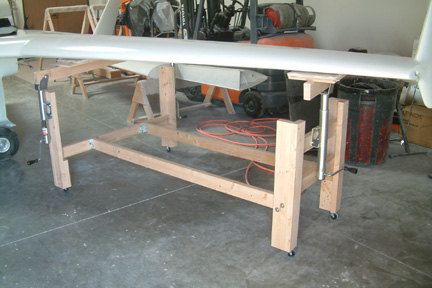 I
started with a 4 post frame structure as shown. One end of the wing leveler is 4 feet
wide while the opposite side is 2 feet. The two (2) horizontal posts are 6 feet long.
The entire frame is made out of 2 x 4's from Lowes. I used bolts to connect the
horizontal posts to its sides because if they are not in use, I can disassemble
and pack them into a tight space.
I
started with a 4 post frame structure as shown. One end of the wing leveler is 4 feet
wide while the opposite side is 2 feet. The two (2) horizontal posts are 6 feet long.
The entire frame is made out of 2 x 4's from Lowes. I used bolts to connect the
horizontal posts to its sides because if they are not in use, I can disassemble
and pack them into a tight space.